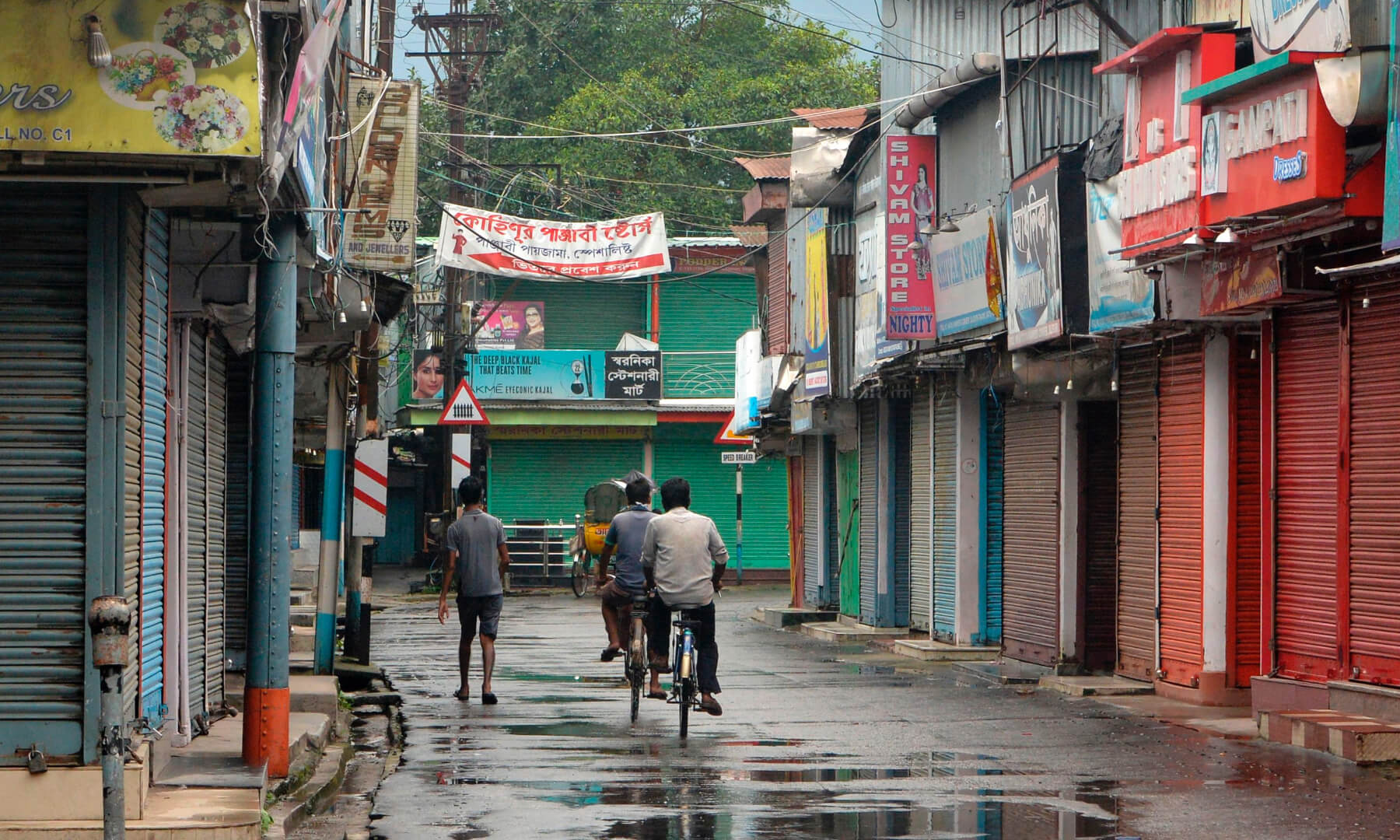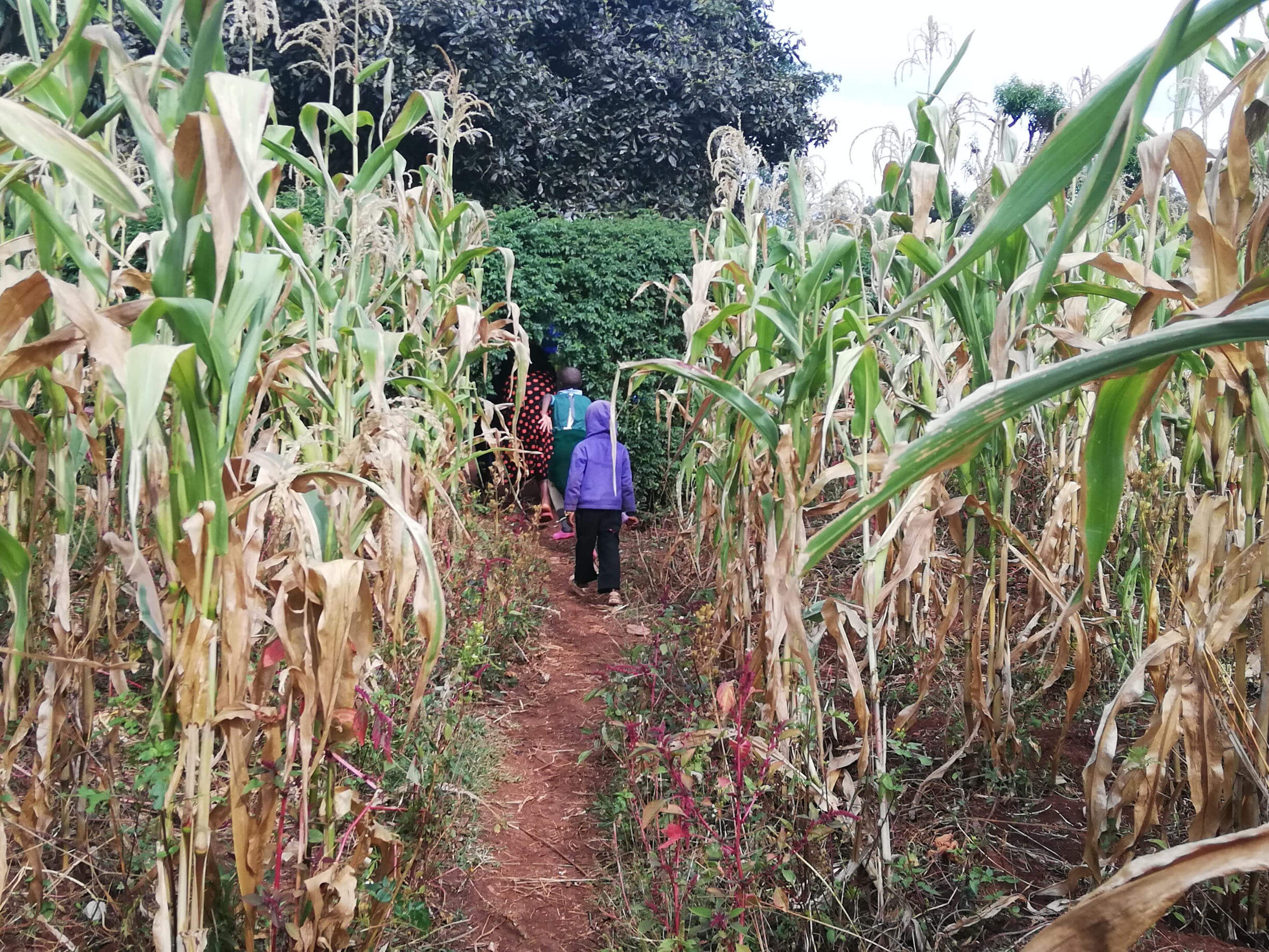
2020 goalkeepers Report
COVID-19
A global perspective


Global Impact
Covid-19 Affects Every Aspect of Society
In other words, we’ve been set back about 25 years in about 25 weeks.

MEASLES IN THE TIME OF COVID‑19
When it first hit, COVID‑19 presented countries with many urgent questions but few clear answers.
ContinueReading

Location:
Siliguri, India
The economic
catastrophe

Location:
Hyderabad, India
In Africa, the earnings of informal workers declined more than 80 percent in the first month of the pandemic.
Understanding
Women’s lives
A GOOD ROLE MODEL
Sylvia, who was born with HIV, learned how to get by on her own in her teens, when both her parents died from HIV-related complications and she gave birth to her daughter Gift. She’s outgoing and self-confident; she built up a network of family, friends, neighbors, and the staff at the health clinic where she goes for treatment. “My doctors,” she said, “think I am a good role model to discuss HIV and support the cause”—so good, in fact, that they invited her to be a peer counselor for other HIV-positive mothers. Soon after the pandemic started, though, the facility ran out of money to pay her a stipend for her counseling—and ran out of Septrin, an antibiotic she takes with her HIV treatment to prevent pneumonia.

LESS ROOM FOR MANEUVER
The good news is that Sylvia can buy Septrin at the local pharmacy—but it costs 30 shillings (about 28 U.S. cents) a dose, which over the course of the month adds up to twice her rent. Her landlord, an old family friend, is usually understanding if she needs to pay late, but now he’s worried about making ends meet, so he’s asking to be paid on time. Sylvia washes clothes and braids hair for a living, but her customers can’t pay her. Meanwhile, her sister, who sold mandazies (fried bread) at a school that closed, can no longer send money. In short, expenses are up, income is down, and there’s less room for maneuver.

CARING FOR GIFT
Gift, who is 4, is especially bright, so Sylvia enrolled her in school in January; it closed almost immediately. Neighbors used to watch Gift when Sylvia had to work, but that’s become harder with social distancing. When Sylvia goes to the hair salon to braid hair, she now brings Gift along. When she’s washing clothes in the neighborhood, she lets Gift play on her own—and trusts that she’ll come to find her mother when she’s hungry.

SAVING MONEY
Skipping meals, a money-saving strategy employed by many women, is an especially risky option for Sylvia because she shouldn’t take her HIV medication on an empty stomach. Nearby Lake Victoria has been overfished for years, and the rains have been unusually heavy in recent years, so fish is harder to get and more expensive. Sylvia still buys omera (small sardines) from time to time but relies on maize flour. “My daughter is used to porridge,” she says. “Even if you give it to her without sugar, she’ll take it.”

A BRAVE MOVE
Last year, Faith did one of the bravest things a woman can do: She left her abusive husband and took her two children to live with her mother at her grandfather’s home. Then COVID-19 destroyed her mother’s vegetable business: It was hard to get to the market, the operating hours kept changing, and good produce became scarce. Faith was also having trouble finding casual work, and the bills started piling up. To relieve the financial pressure on the household, Faith’s grandfather asked her to leave.

BACK HOME
With nowhere else to go, Faith had to go back to her husband and his family. She’d originally left when she’d gone into premature labor after one of his beatings, and her child died after three days. Faith says that her husband hasn’t been violent since she moved back but admits that “sometimes I can see he is this close to punching me.” She also talks about the constant emotional abuse she suffers from his family, particularly his mother, who blames Faith for her own financial problems.

CHILDREN COPING
When her children were in school, she knew they’d get lunch every day. If she couldn’t afford to pay for it, the teacher would advance her money for a few days. Now, if she’s short, they don’t eat. Her 8-year-old son, now constantly exposed to his stepfather’s explosive temper, has started pushing back against his mother and refusing to do his homework.

HARVESTS OF RAIN
In Kiambu, the price of maize shot up (from 90 to 140 shillings), so Faith and her children eat whatever she can grow. “This past Sunday,” Faith said when she was interviewed, “we almost slept hungry. … I just boiled some kale for the children and they ate it by itself.” Her in-laws don’t share food with her or her children. They can’t afford to buy tanks of water, so they’re harvesting rainwater instead.

THE PROVIDER
Agnes, the eldest child in her family, has felt an obligation to provide for the rest of the family ever since her parents passed away when she was 12. Before COVID-19, Agnes lived in Kawangware, an informal settlement in Nairobi, with her three children (15, 12, and 6), her younger sister Yvette, and Yvette’s two children (6 and 1). She washed windows at Nairobi hotels while Yvette and the older children cared for the younger children. Yvette, who also worked odd jobs in the neighborhood, had a long history of respiratory illnesses due, according to Agnes, to “doing laundry for people where we’re always in water.” In April, when her symptoms flared up, Yvette worried that given her trouble breathing, if she went to a health facility she’d be put in quarantine, which she couldn’t afford. Finally, it got bad enough that she checked into a private hospital, where she died three days later of undiagnosed diabetes.

FUNERAL EXPENSES
Agnes cannot pay the enormous hospital bill of 130,000 shillings (approximately US$1,200). In good times, she can earn 200 shillings a day. She was hoping her chama (investment group) could help, but that option “fell through.” The day before she was interviewed in May, she had gone “to look for prominent people who can assist me with the hospital bill.” Her biggest concern is raising money for a proper funeral for her sister—including taking her body to their maternal home in a hearse—but Agnes cannot claim the body until she pays the hospital bill.

WORKING FOR THE STOMACH
Earning enough money to buy enough food to keep her family alive has always been Agnes’s priority. “I work for the stomach” is how she put it during her first interview last year. When asked whether COVID-19 has changed the family’s diet, she answered, “It has changed drastically because we have no food in the house.” While the children may miss breakfast and lunch, and have lost weight, Agnes tries to “hustle to make sure that at least there’s food for supper.” Ultimately, she wants to teach her children, she says, “to program themselves,” to learn how to cope in case she’s not there.

ENJOYING CHILDHOOD
Agnes will raise Yvette’s young children as her own. She has decided not to tell the 6-year-old about her mother’s death. “For now,” she says, “I’ll let her enjoy her childhood a bit.” Agnes’s 15-year-old son is unlikely to go back to school after the pandemic; he will probably join the hustle economy in Kawangware to help her support the family. Her 12-year-old daughter is even more at risk. Last year, Agnes talked at length about the struggles of young girls in Kawangware, and how girls her daughter’s age are sniffing glue regularly, engaging in transactional sex to pay for basics, and sometimes getting pregnant. With the family deep in debt, Agnes worries what the future may hold for her daughter.


A Collaborative
Response
LOCATION:
Ikotun Egbe, Lagos State, Nigeria
It is impossible to inoculate a national economy against a global economic catastrophe.

LOCATION:
Kolkata, India
Innovating with
equity in mind
1
Develop diagnostics and treatments to manage the pandemic in the short term and vaccines to end it in the medium term.
2
Manufacture as many tests and doses as we can, as fast as we can.
3
Deliver these tools equitably to those who need them most, no matter where they live or how much money they have.

LOCATION:
San Diego, USA

LOCATION:
Bogotá, Colombia
What the world does in the next few months matters a great deal.

LOCATION:
Lupiro village, Tanzania
Explore the data

Methodology
IHME estimates break down into four time periods, each of which is informed by specific data and methods.
ContinueReading
Global Goals
We started writing the Goalkeepers Report to track progress toward the Sustainable Development Goals (SDGs). We promised that, every year, we’d publish the most recent global data about the 18 indicators most closely related to the work our foundation does. This year, as we explain here, the estimates aren’t perfect, but we believed it was important to try to quantify the impacts of COVID-19. As in previous years, the projections include better and worse scenarios. We are focused on the difference between the scenarios. It is up to world leaders to make the tough decisions to get as far away as possible from the worse scenario and as close as possible to the better one.
Poverty

PROGRESS »
Stunting

PROGRESS »
Agriculture

PROGRESS »
Maternal Mortality

PROGRESS »
Under-5 Mortality

PROGRESS »
Neonatal Mortality

PROGRESS »
HIV

PROGRESS »
Tuberculosis

PROGRESS »
Malaria

PROGRESS »
Neglected Tropical Diseases (NTDs)

PROGRESS »
Family Planning

PROGRESS »
Universal Health Coverage

PROGRESS »
Smoking

PROGRESS »
Vaccines

PROGRESS »
Education

PROGRESS »
Gender Equality

PROGRESS »
Sanitation

PROGRESS »
Financial Services for the Poor

PROGRESS »
